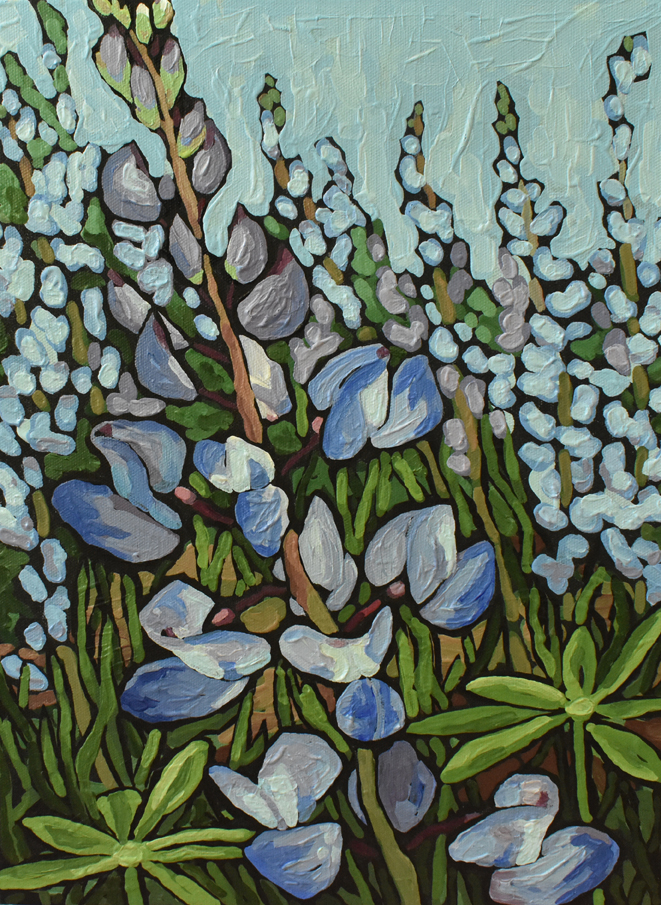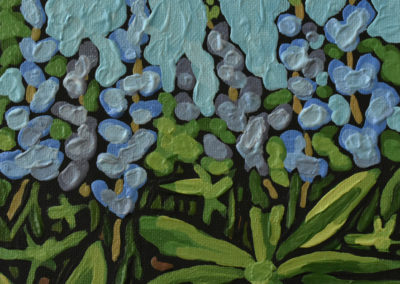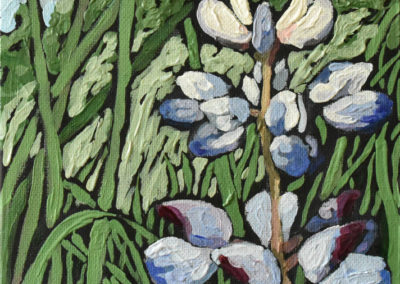Lupins – Three Studies
June 2017
”Now I see a tree of agile grace and beauty, limbs in upward swing pulling down the sun, building up the earth, breathing out the air, this very life for us, this simple truth, we are all made up of one…”
Excerpt of a poem by John LaRose
I walked through the Black Oak Savannah of High Park with forestry technician for Urban Forestry John La Rose. The birds and crickets sang in full throttle, the earth smelled rich and moist and the foliage glistened in the sun after the brief and intense rain. John pointed out the wildflowers as we walked. First a butterfly milkweed. Its stunning orange flowers will bloom later this summer. Then a showy tick trefoil. This wildflower is not only beautiful, but also beneficial. It takes nitrogen from the air and brings it into the soil, converting it to a form that plants can use. Finally we come to a large patch of lupins, a classic symbol of the black oak savannah. With it’s colour variations – of purple, violet, white and pink, this flower is a beauty.
John tells me how plants are beings, like us, only upside down. “The roots are the heads, looking for food and interacting. The leaves are the body, collecting the light, they don’t have to do the thinking. Plants are deeply connected to the earth around them, they connect the air and the earth together. And science is finally figuring out how to measure how plants interact with each other.”
John is passionate about protecting native plant ecosystems; “I’m here to take care of nature. I’m just happy to be in High Park. I’ve made it. In terms of forestry you want someone who will stick with it for years, who will see a vision through. We live in this environment that we were born from, that feeds us perfectly, if we just take care of it.”



